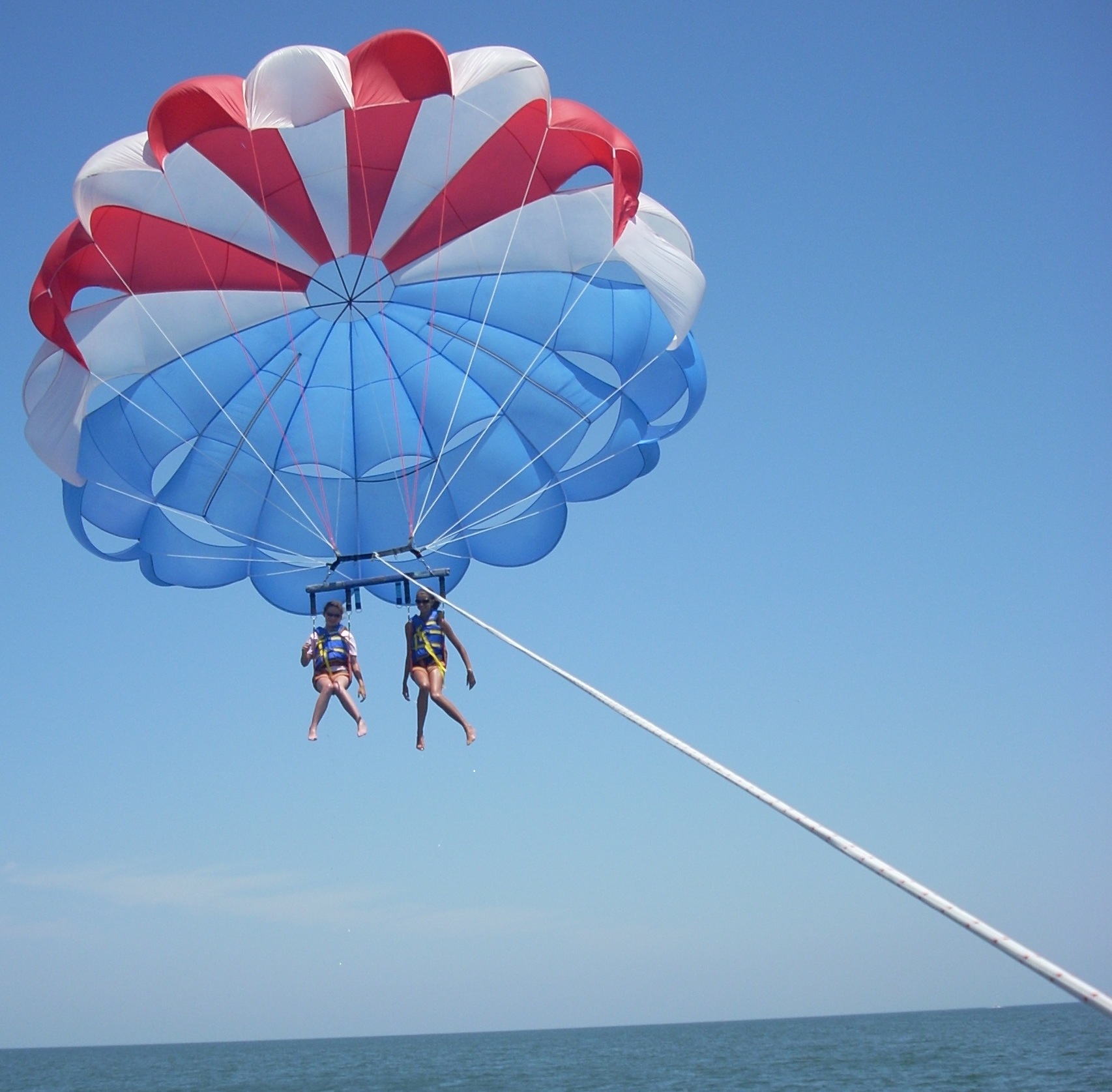
ParaSailing
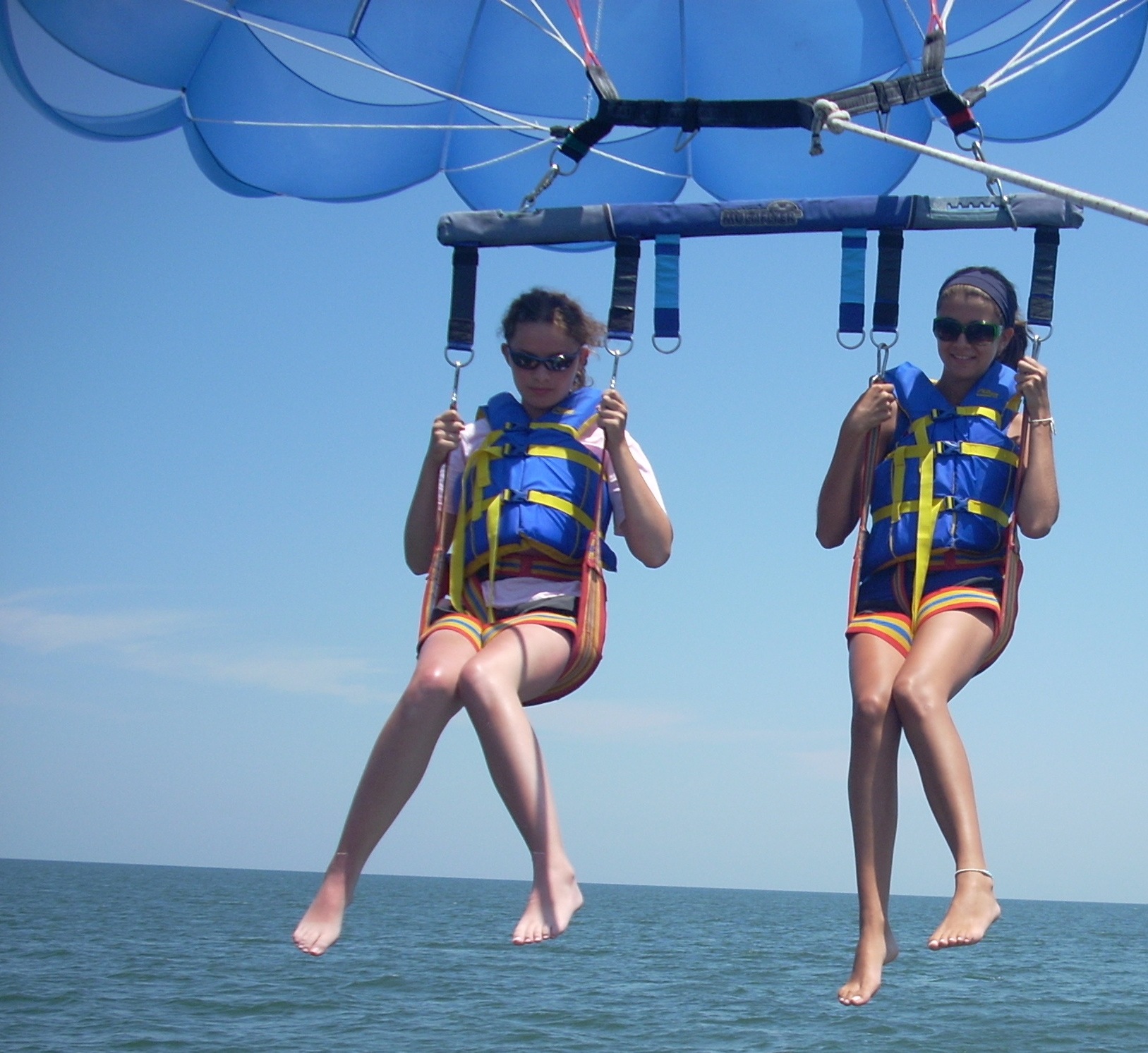
| Route 66 | Cities | Beaches |
 |
ParaSailing |
 |
|
Of all the experiences Hatteras has to offer, surely Parasailing offers the most excitement and demands the least actual skill. You have to have a certain tolerance for height and motion, but beyond that all you have to do is sit tight and hold on. As can be seen by the photos on this page, teenage girls can do it with no problem. In fact, Hatteras Parasailing has taken kids as young as 10 and adults as old as 81. You can go up alone or with a partner. Most people do it with a partner to have someone to share the experience with. Hatteras Parasailing is run by one family, which has been doing this for 18 years. The mother runs the office while the two older sons run the boat. Their little registration nook is inside the store by the fish cleaning station at Oden's Dock, Hatteras Village (986-2627). In addition to the captain and mate, the boat is allowed six passengers. This usually means two groups, each consisting of two riders and one observor. You'll be gone about an hour from the dock. First you get out to the open water of Pamlico Sound. The first riders are set up, launched and given a 15 minute ride, and reeled back in. The second set of riders is set up, launched and given their 15 minute ride and reeled back in. Then you return to the harbor. Each set of riders is given the choice as to whether they want to touch down in the water or not. Since they launch off a platform at the rear of the boat, if they say No, they can be kept clear of the water. But most riders want to touch down, so once high in the air, they'll be allowed to drift slowly down to the water (below left) and sink in up to midcalf, at which point the slack is taken up on the line and the parachute climbs back to altitude. This is repeated twice during their flight. |
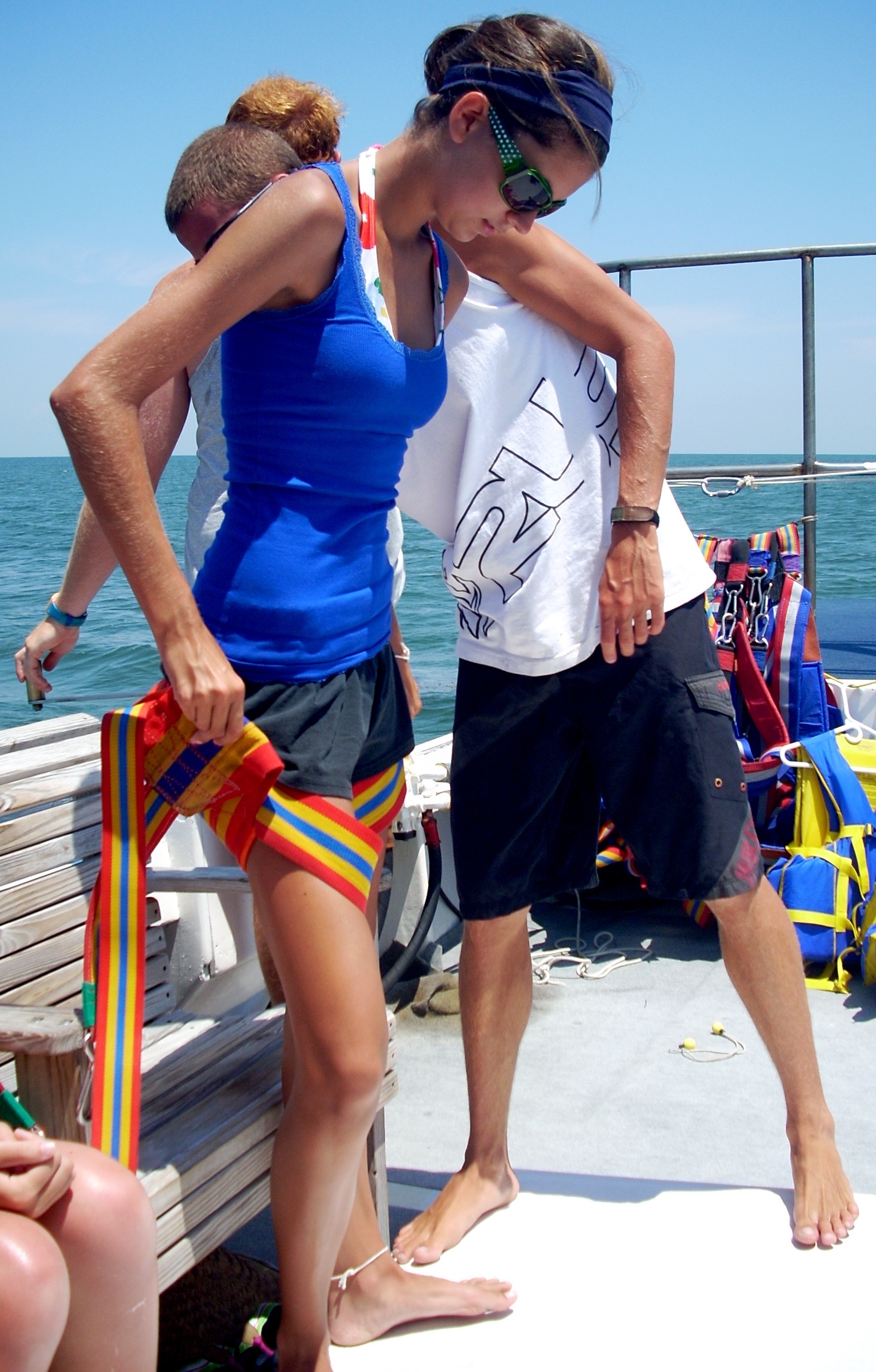 |
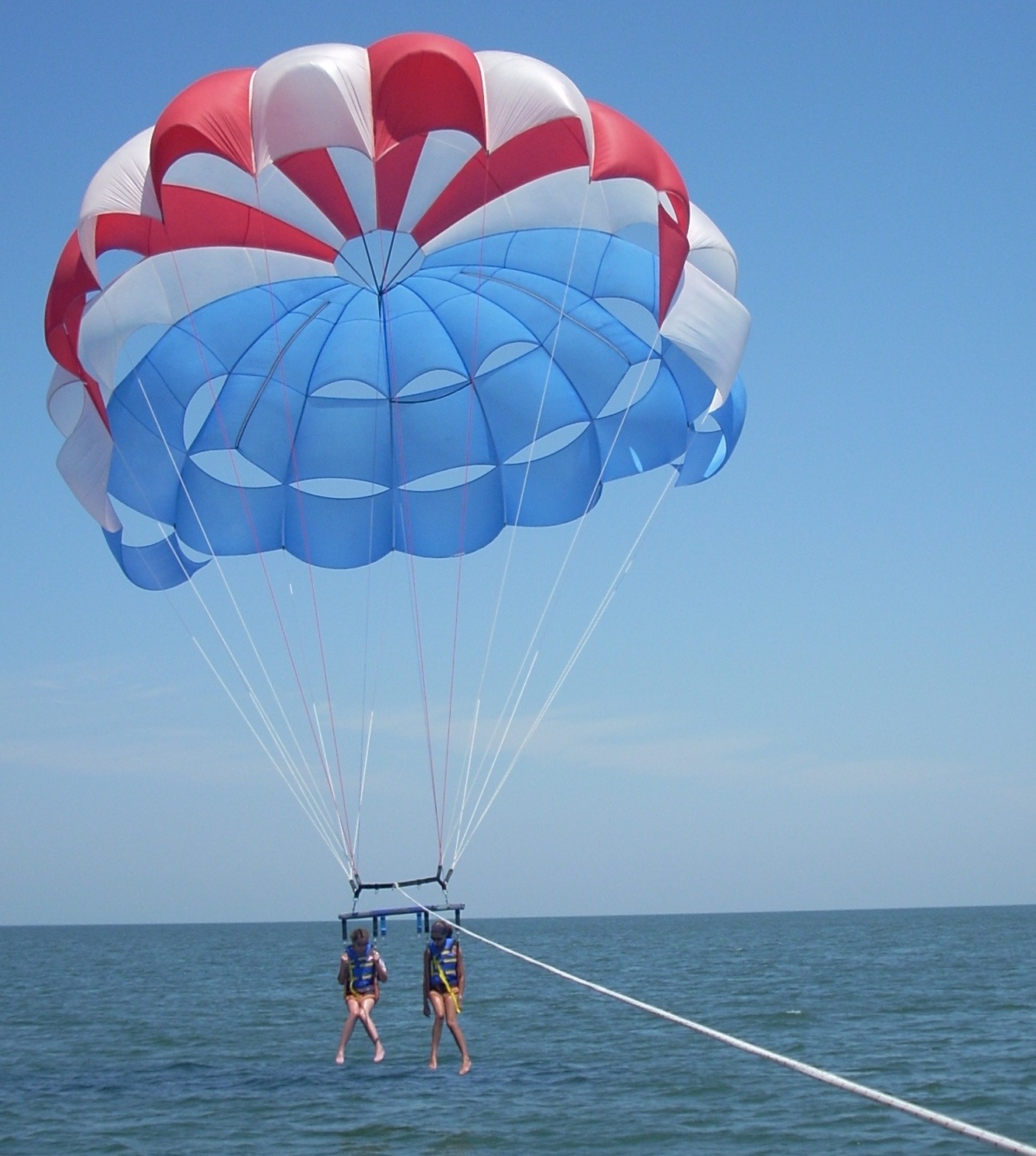 |
Safety is a priority. Riders are helped into the harnesses by the mate, who makes sure all points fit snugly but not too tight (above right). Then they're given a life preserver and hooked into the chute rigging. Riders are lifted backward off the platform at the rear of the boat as the line unreels. The photo top right shows the two girls with their feet having just cleared the platform. Top left shows them with the line much further out. At the highest extreme, the chute climbs to about 300 feet. You get a tremendous view of Hatteras Village and the southern tip of the island. Looking back eastward, you can see Frisco clearly, and looking further south, you can see Hatteras Inlet and the northern tip of Ocracoke Island. While you're drifting along up there, once you get used to being 300 feet in the air, you can watch the ferries chugging back and forth between the two islands, the fishing boats out on the ocean and across the Sound, and various small islands that you usually do not see from either land or the ferries. Theoretically, you could take a camera up there and get some great pictures. But you'd have to have one of the disposable waterproof cameras and it would have to be strapped firmly around your neck and waist, because at times your hands are occupied. Once up there, you can let go of the bar, because you are very firmly held in place. But on the way up and down you have to hold on, and the camera has to survive on its own. |
You will, of course, need a good pair of sunglasses with solid strap. You want to apply suntan lotion before leaving the dock. Most riders wear a swimsuit, but whatever you wear, assume it's going to get wet. Empty your pockets. Hats are probably not a good idea, given the cords and bars overhead and the breeze up there. When you put the harness on, they'll ask you to remove your shoes. Since you'll be gone for an hour in the hot sun, you might want to bring a soft drink or bottle of water. Your observor can keep track of it while you're airborne. The parasail was developed from military technology and introduced into civilian use in 1963, but the more elegant "waterbird" design debuted in 1974. The rear launching platform first appeared in 1972. The boat you operate from is called a winchboat, a commercial patent which first appeared in 1980. The parasail line is controlled by a power winch, with the line disappearing into a well under the launching platform. The harness system and safety bar were introduced in 1985. The braided nylon line is 1000 feet long if fully unrolled from the wheel. Parasailing Hatteras only allows riders to ascend to about 300 feet, which is similar to parasailing at Myrtle Beach and Virginia Beach. At Daytona Beach, Florida, riders are allowed up to two thousand feet. At Hatteras they'll take you parasailing in winds of 12 to 27 mph. Outside that range and they'll postpone.
|
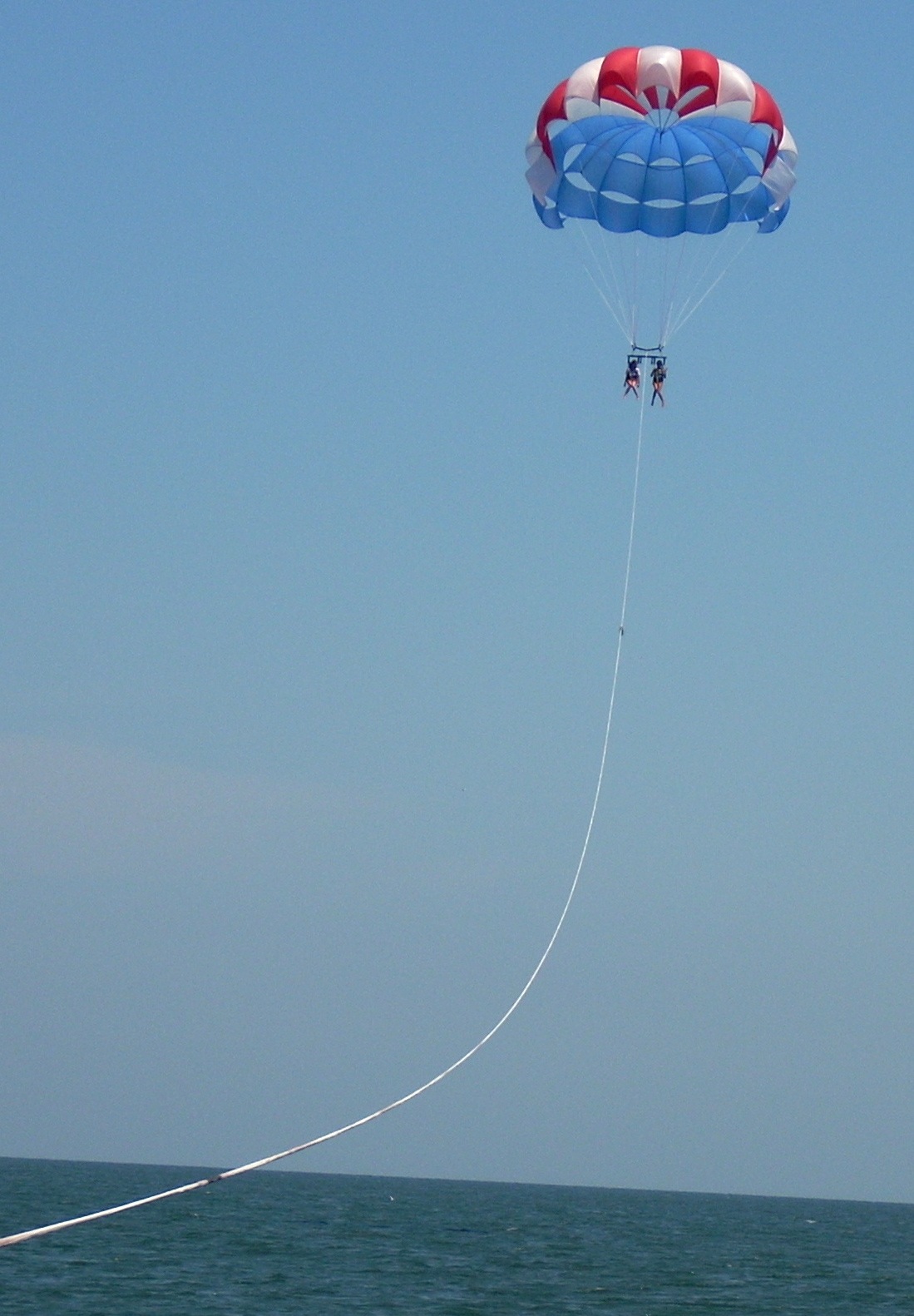 |
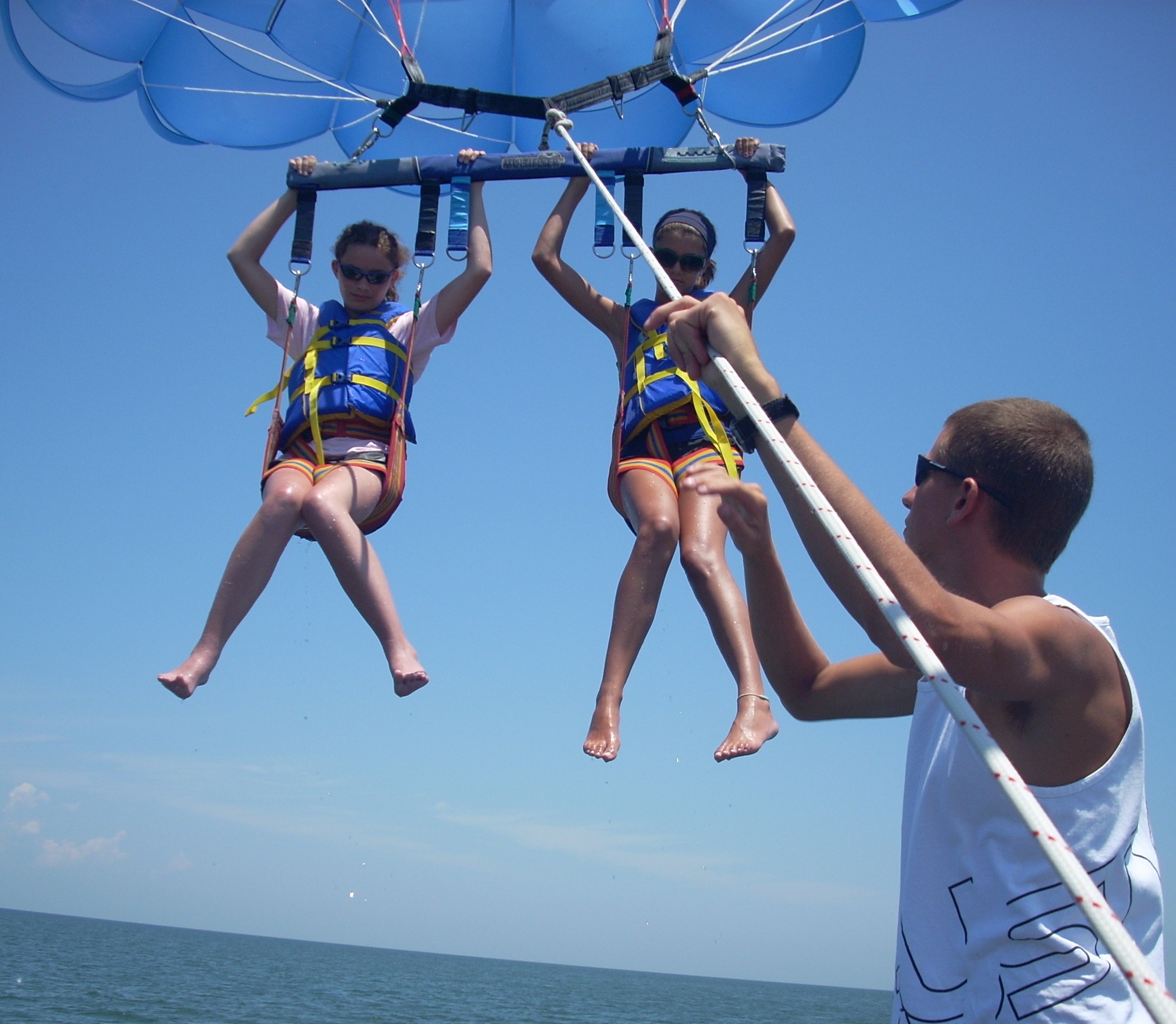 |
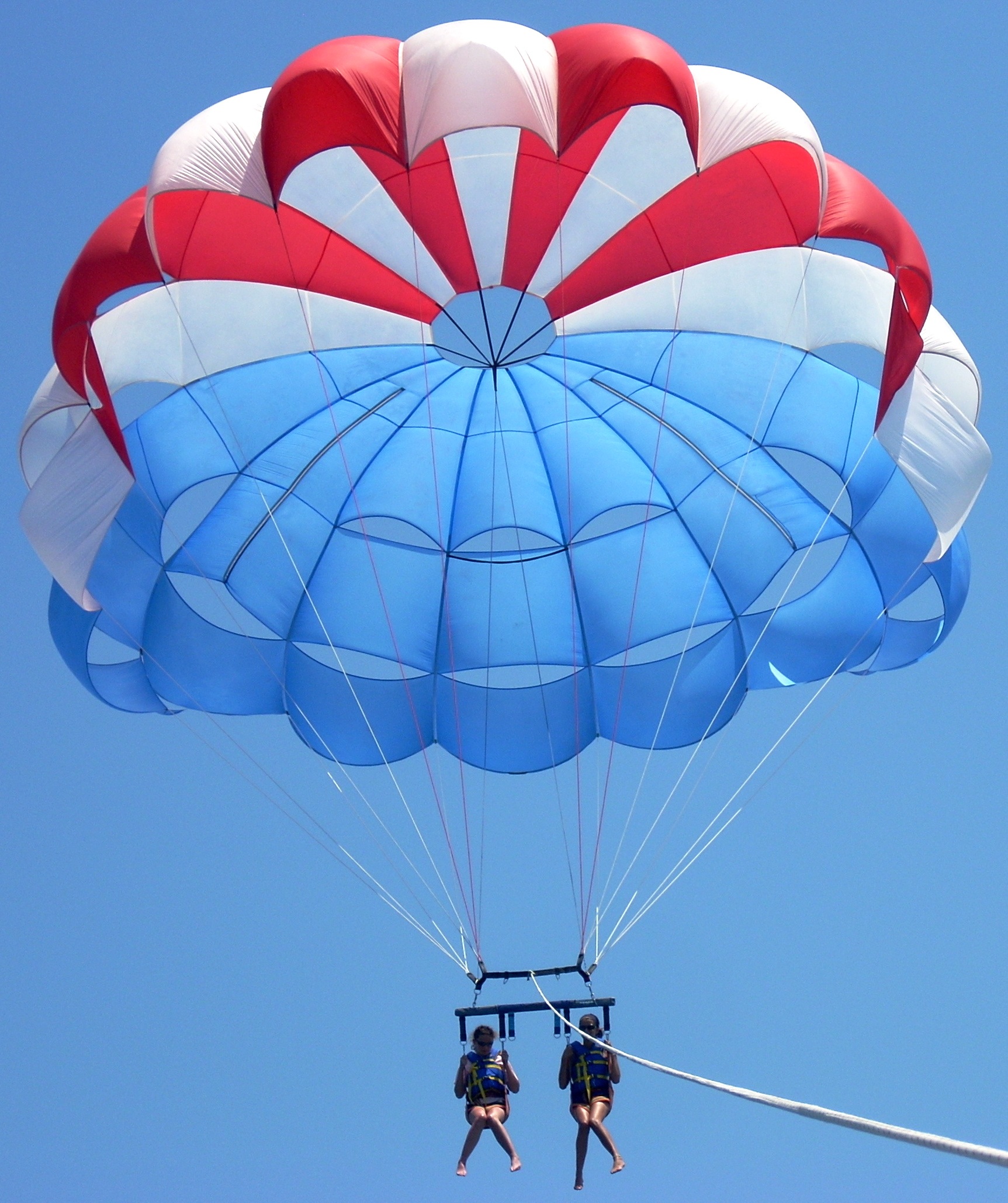 |
|
|||
|